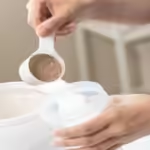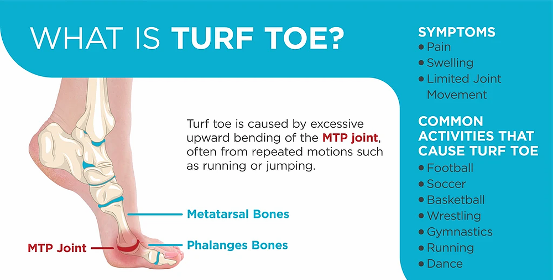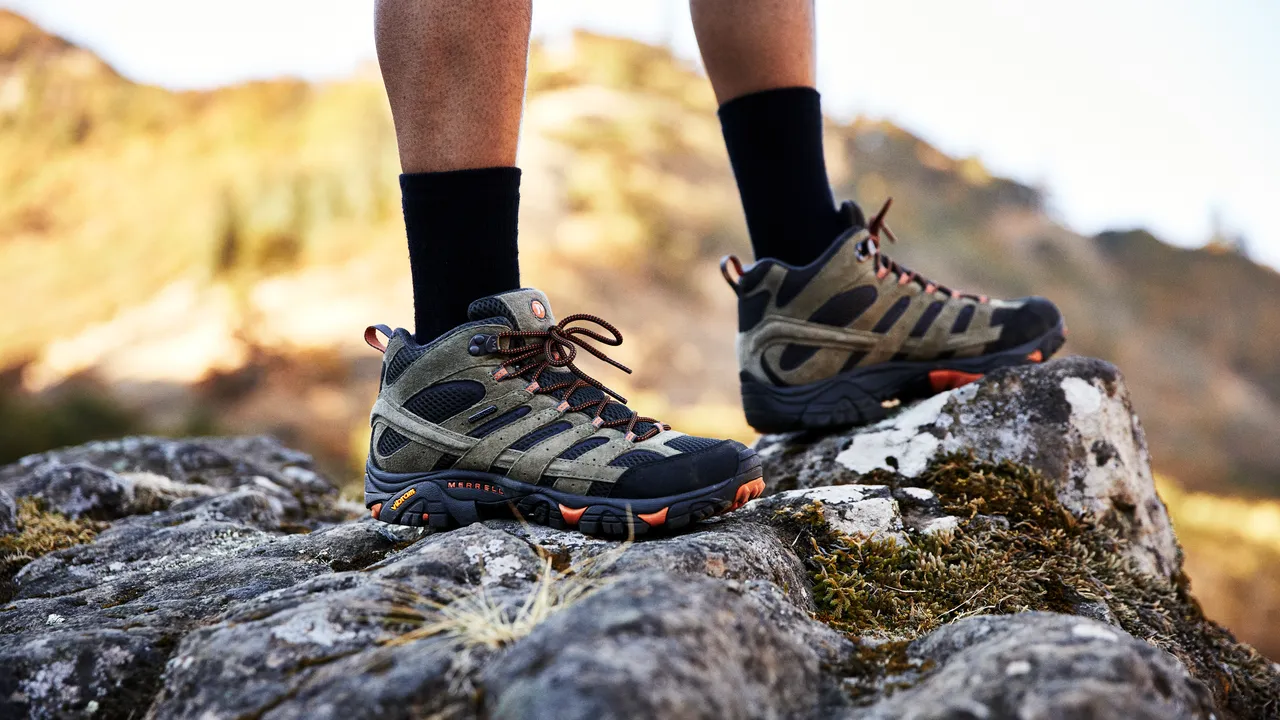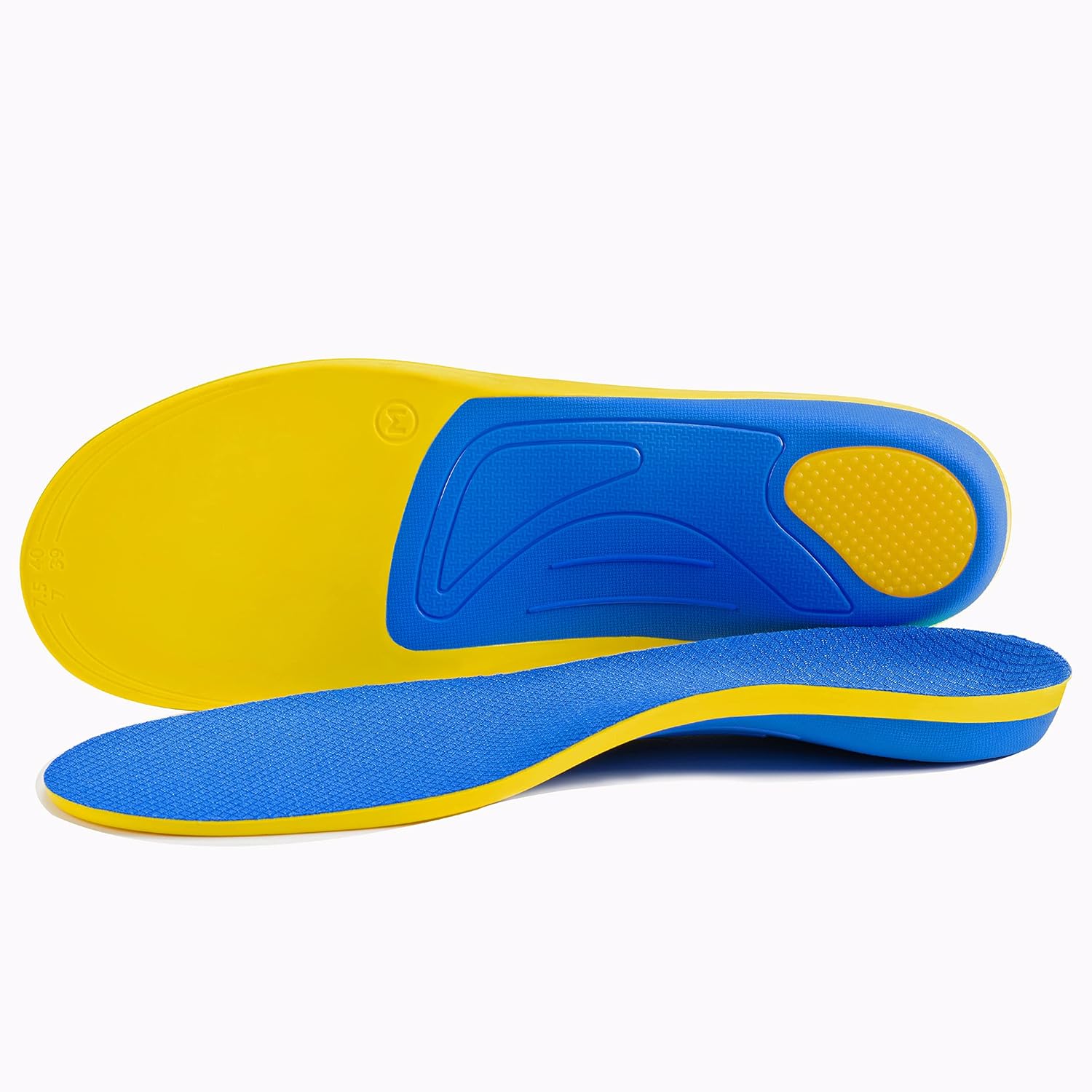Turf toe is a common yet often misunderstood sports-related injury that affects athletes and physically active individuals. Despite its prevalence, many people are unaware of its causes, symptoms, treatment options, and preventive measures. This article aims to shed light on turf toe, providing valuable insights to help individuals recognize, manage, and prevent this painful condition.
What is Turf Toe?
Turf toe is a sprain of the main joint of the big toe, occurring when the toe is forcibly bent up into hyperextension. This injury is most commonly associated with sports played on artificial turf, where the foot can stick to the hard surface, leading to overextension of the toe joint. However, turf toe can occur on any surface and in various activities that put excessive strain on the big toe.
Causes of Turf Toe
The primary cause of turf toe is the excessive upward bending of the big toe joint. This can happen in several ways:
- Sports Activities: Athletes who participate in sports like football, soccer, basketball, and gymnastics are at higher risk due to the sudden starts, stops, and turns that can put pressure on the toe.
- Artificial Surfaces: Playing on artificial turf increases the risk as the foot can grip the surface too well, leading to overextension.
- Inadequate Footwear: Shoes that lack support or flexibility can contribute to the development of turf toe by failing to provide enough protection against the forces exerted on the toe.
Symptoms of Turf Toe

Symptoms of turf toe vary depending on the severity of the injury but commonly include:
- Pain at the base of the big toe
- Swelling and inflammation around the toe joint
- Limited joint movement and difficulty walking
- A popping sound at the time of injury (in severe cases)
Diagnosis
Diagnosing turf toe accurately is essential for effective treatment and quick recovery. Healthcare providers start with a thorough physical examination, focusing on the big toe’s range of motion, the presence of swelling, and the specific location of pain. To confirm the diagnosis and assess the injury’s severity, X-rays are commonly used to rule out bone fractures. In cases where soft tissue damage needs to be evaluated more closely, MRI scans may be ordered. These imaging techniques help in visualizing the extent of the sprain and any possible associated injuries within the foot.
Treatment Options

The treatment of turf toe aims to alleviate pain, reduce inflammation, and restore the toe’s functionality. The approach to treatment generally follows a conservative path initially, with the following steps:
- Rest: Key to healing, rest involves minimizing activities that put stress on the injured toe, allowing the tissues to repair. This might include taking a break from sports or any vigorous activities that could aggravate the condition.
- Ice: Applying ice packs to the affected area for 15-20 minutes several times a day can significantly reduce swelling and alleviate pain. It’s one of the first interventions recommended following the injury.
- Compression: Using a compression bandage or tape around the toe and foot can help control swelling and provide support to the injured area, aiding in stabilization.
- Elevation: Elevating the foot above heart level, especially during the initial days following the injury, helps reduce swelling and promotes healing.
- Pain Relief: Nonsteroidal anti-inflammatory drugs (NSAIDs) like ibuprofen can be effective in managing pain and reducing inflammation. These should be used as directed by a healthcare provider.
- Physical Therapy: Once the acute phase of the injury has passed, physical therapy plays a crucial role in rehabilitation. A physical therapist can guide specific exercises to restore strength, flexibility, and range of motion to the toe, ensuring a safe return to activity.
In cases where conservative treatments do not lead to satisfactory improvement or if the injury is particularly severe, surgical intervention may be considered. Surgery aims to repair any significant damage to the toe joint and surrounding structures, addressing issues that cannot be resolved through non-surgical means.
Prevention and Management
Preventing turf toe is particularly important for athletes and individuals engaged in high-impact sports. Effective strategies include:
- Wear Appropriate Footwear: Properly fitting shoes with adequate support can prevent excessive toe extension. Athletic shoes designed for specific sports can offer additional protection and reduce the risk of turf toe.
- Strengthening Exercises: Regularly performing exercises that strengthen the muscles around the foot and toe can enhance stability and prevent injuries. Exercises focusing on the big toe can be particularly beneficial.
- Gradual Increase in Activity: Avoid sudden increases in sports intensity or duration. Gradually building up allows the body, including the toes, to adapt to increased demands, reducing the risk of injuries like turf toe.
By understanding the diagnosis and treatment options for turf toe, as well as implementing preventive measures, individuals can effectively manage this condition. Early intervention, combined with a comprehensive approach to treatment and prevention, can help ensure a swift recovery and minimize the impact of turf toe on physical activities.
| Arch Support |
| Arch Supports |
| Best Arch Support Insoles |
| Best Insole for Plantar Fasciitis |
| Insole for Flat Feet |
FAQ Section
Q: What exactly is turf toe?
A: Turf toe is a sprain at the base of the big toe, caused by excessive bending or hyperextension. It’s common in sports played on artificial turf but can occur in any activity that stresses the toe.
Q: How can I tell if I have turf toe?
A: Symptoms include pain at the base of the big toe, swelling, limited joint movement, and sometimes a popping sound at the time of injury. If you experience these, turf toe could be the culprit.
Q: What are the best treatment options for turf toe?
A: Treatment usually starts with rest, ice, compression, and elevation (RICE), along with NSAIDs for pain relief. Physical therapy may also be recommended for rehabilitation.
Q: Can turf toe be prevented?
A: Yes, wearing appropriate footwear, strengthening exercises, and gradually increasing activity levels can help prevent it. It’s all about giving your toes the protection and strength they need.
Conclusion
Turf toe might be a hurdle, but it’s not insurmountable. With a clear understanding of its causes, symptoms, and treatment options, you’re well-equipped to tackle this condition head-on. Remember, prevention is key, and early intervention can make all the difference. Stay informed, stay prepared, and keep your toes in top condition for all your athletic endeavors.









